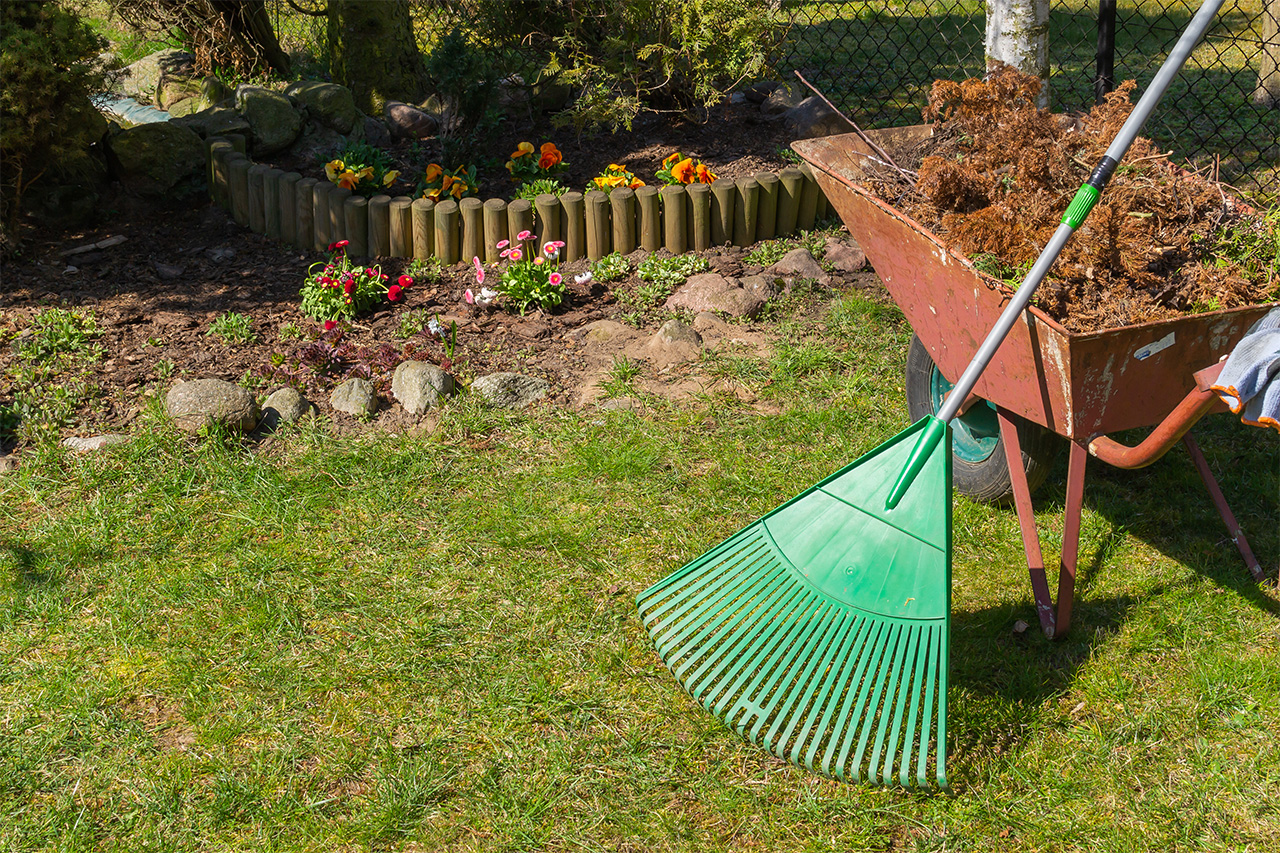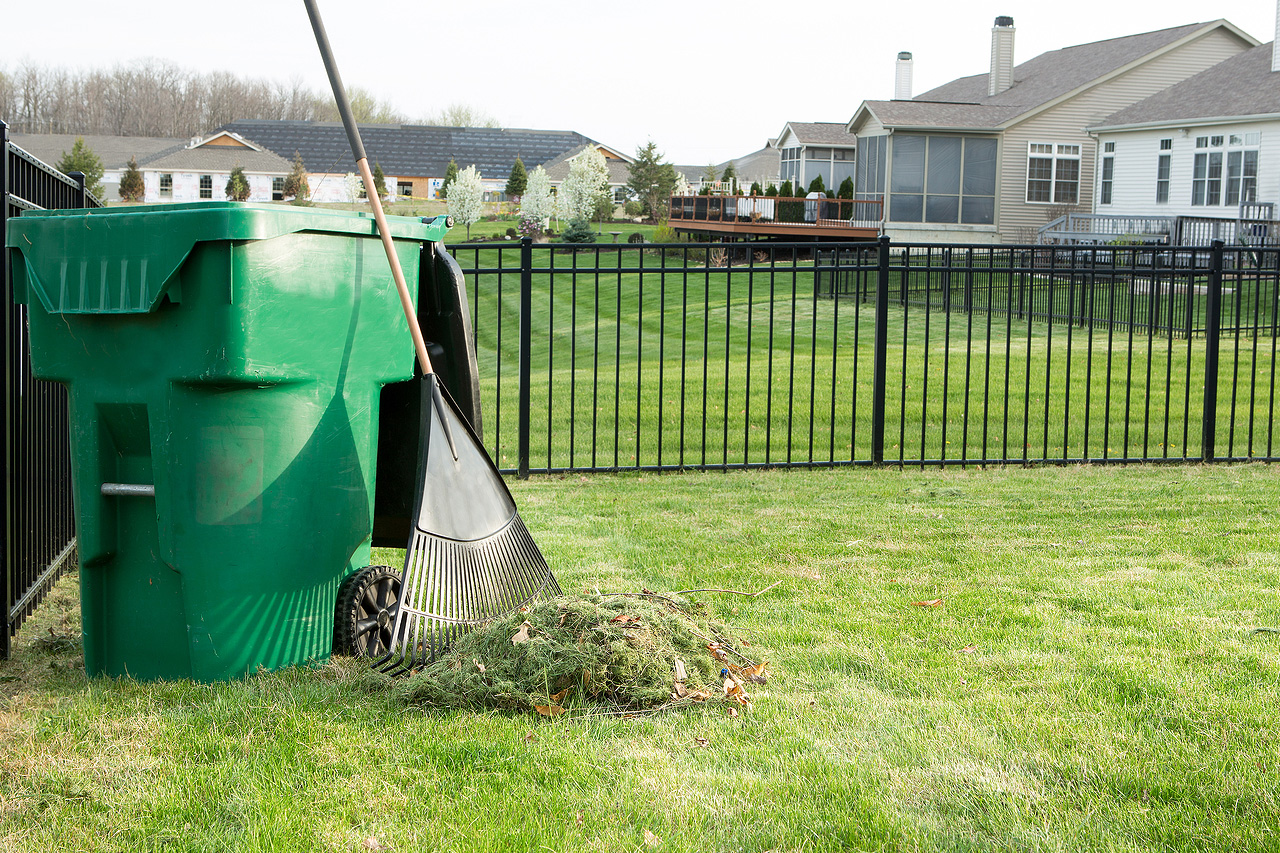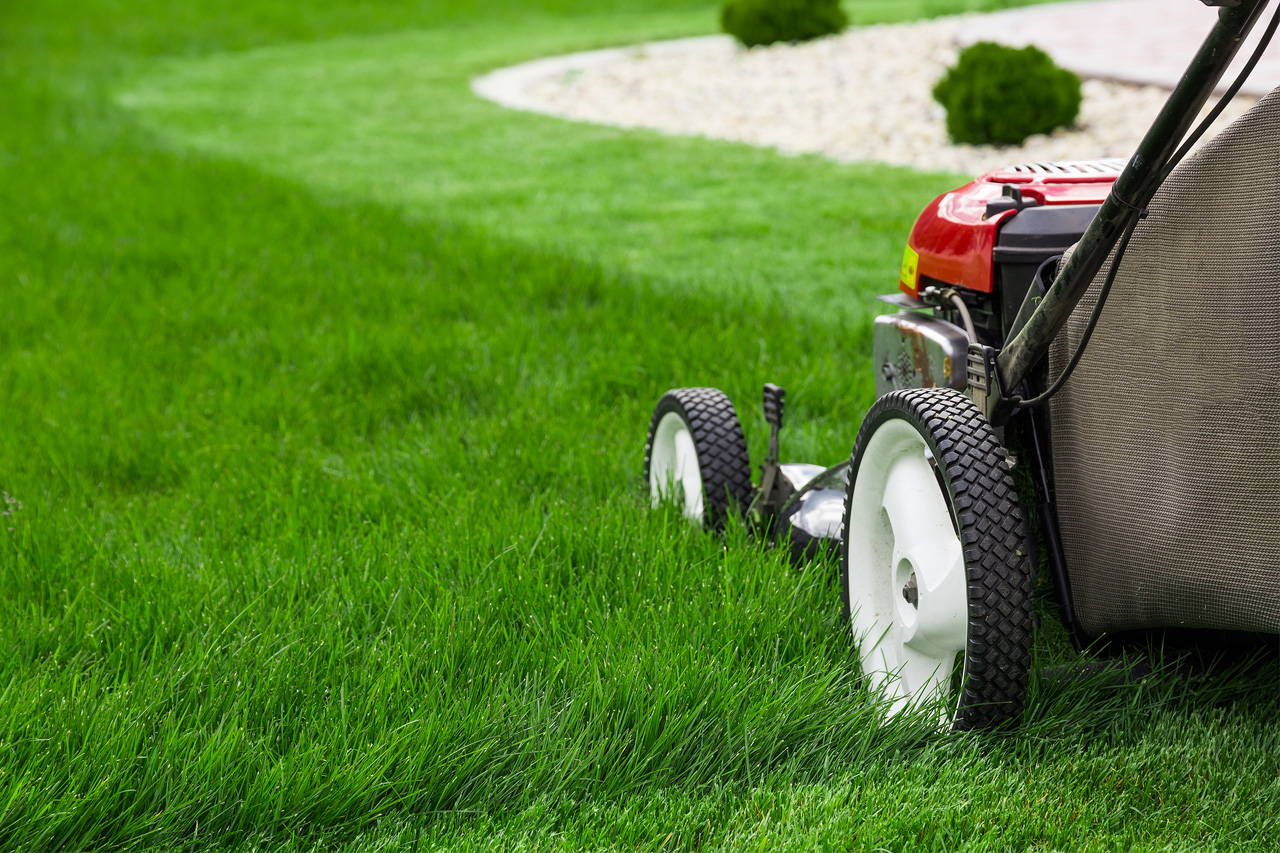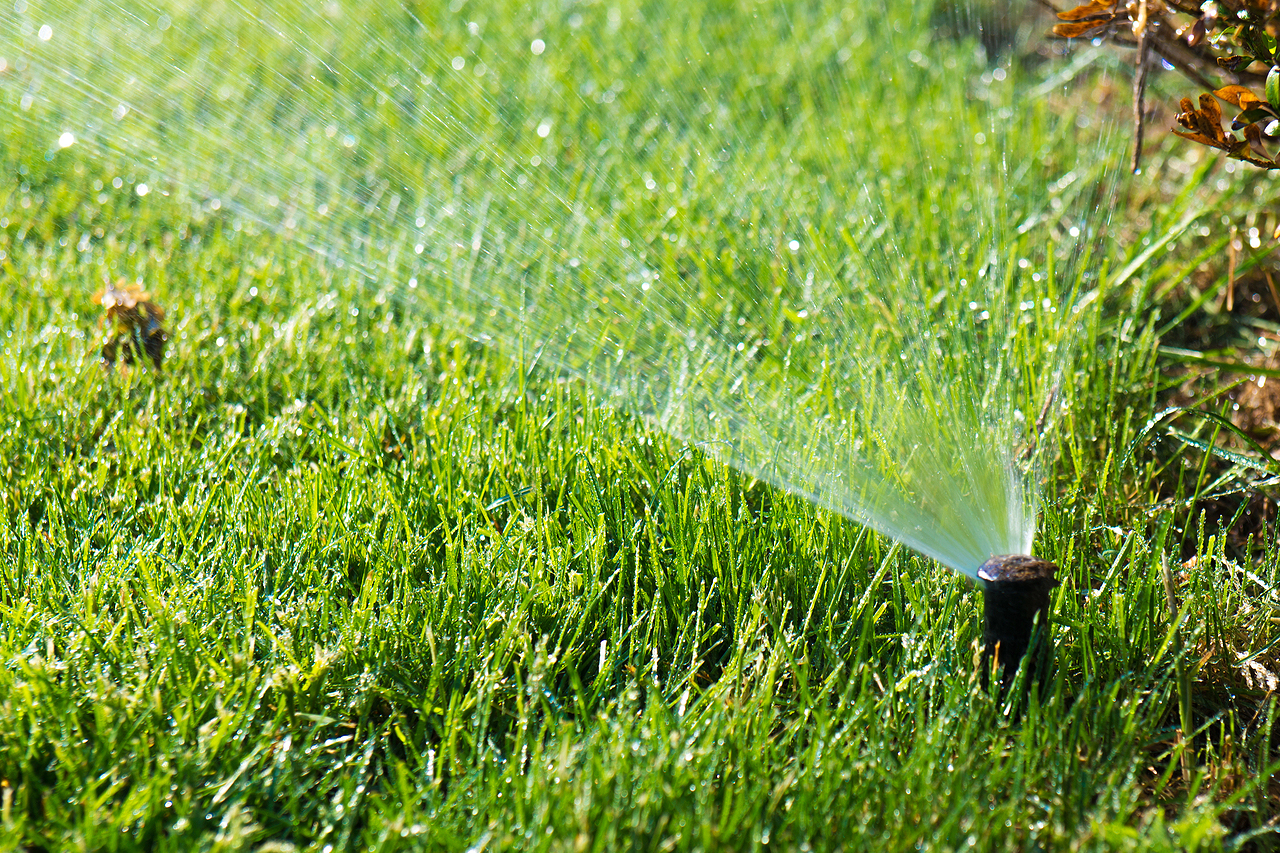
Fire up the lawn mower, grab the rake, and prep the lawn fertilizers; spring is here and summer is around the corner. Now is the ideal time to start on lawn maintenance to ensure your lawn has a healthy and productive growing season.
At Elite Landscape Solutions, we realize cultivating a healthy lawn may be new for you, but our list of spring lawn care tips for Kansas homeowners can serve as a reliable guide
9 Steps to Get Your Lawn Ready for Growth
As you go through this list, keep in mind every homeowner’s spring lawn care plan will look different based on the weather and the needs of their specific grass type. In general, your spring lawn maintenance plan should include:
Recommended Spring Lawn Care Tasks Include
- Clean up the lawn
- Rake or dethatch the yard
- Aerate the soil
- Overseed bare patches
- Fertilize the grass
- Refresh your mulch
- Address weeds
- Start mowing the grass
- Start watering the lawn
1. Clean Up The Lawn

Start by cleaning with a leaf rake to remove dead plant debris. While cleaning the lawn, rake gently to help protect new growth and prevent damage to the grass blades. However, some spots may have matted grass caused by compacted soil or excessive watering. Don’t be afraid to use a little more force when addressing these areas.
2. Rake or Dethatch the Yard

Thatch is composed of dead grass, leaves, roots and other plants. Layers of thatch sit between the top of the grass blades and the roots of the grass. A thatch layer thicker than half an inch can prevent grass roots from receiving nutrients, water, lawn fertilizers and affect the soil pH.
Different types of grass need to be dethatched at different times throughout the year. Warm season grasses should be dethatched during the late spring and the ideal time to dethatch cool season grass falls around the very early spring.
When dethatching the lawn in early spring, use a leaf rake or dethatching rake. It’s important to pull up the soft spongy thatch layer when raking the lawn. If you aren’t sure if you’re pulling up the thatch or damaging your healthy lawn, contact a professional for assistance.
3. Aerate the Soil

Aerating creates thousands of small holes in your lawn with the goal of breaking down compacted soil. This may not be necessary in all cases. In general, aerating is typically appropriate when dealing with heavily compacted soil. If your lawn is showing signs of soil compaction it’s best to aerate your lawn in the spring or summer. You can rent lawn aerating machines from local hardware stores to help with the process or contact a local professional for spring lawn care help.
4. Overseed Bare Patches

No one likes bare spots on the lawn. Bare spots are usually a product of high foot traffic, pets or winter damage, yet they are easy to address. Fix bare patches by overseeding bare patches during the spring. Once you’ve planted the grass seed, tend to the areas carefully. You should treat reseeded grass as if it were newly planted. Keep the seeds moist until they have sprouted and fertilize afterward. A good rule of thumb: overseed after dethatching or aerating your lawn.
5. Fertilize the Grass

Spring is an ideal time to begin using lawn fertilizers. In order to nurture a healthy lawn it’s crucial to know what lawn fertilizer to use and how much to use. For spring fertilization, we recommend using high quality, slow release fertilizers or compost. Fertilizer labels have important NPK values. NPK stands for nitrogen (N), phosphorus (P), and potassium (K). The NPK value represents the specific ratio of these nutrients in the fertilizer. When deciding on your fertilizer, consider your soil pH and choose the NPK values that work best with your lawn.
6. Refresh Your Mulch

Mulch is a great addition to your flower beds. Organic mulch like tree bark and inorganic mulch like recycled rubber limit weed growth and help plants retain moisture. Your spring lawn care plan should include clearing out old mulch and debris from your flower beds and replacing it with fresh mulch. If you’re a Wichita homeowner and you’d rather not deal with it, Elite Landscaping Solutions offers lawn maintenance packages that include spring flower bed cleanup.
7. Address Weeds

Weed growth is an unfortunate reality throughout the early spring, and it usually takes more than one treatment to kill weeds like dandelions and crabgrass. Pre-emergent herbicides are used to kill weeds before the seeds germinate and grow. Post-emergent herbicide is used to kill weeds that are fully grown. Be aware, do not use herbicide on bare spots you have overseeded, as it will prevent your grass seed from germinating. Or, leave it to the pros – Elite Landscape Solutions offers professional weed control in Wichita, KS tailored to your lawn’s needs.
8. Start Mowing the Grass

At this point in the season you’ll probably need to start mowing your lawn. Here’s what you’ll need to do before cutting the grass for the first time each spring:
Tune Up Your Mower
A lawn mower tune up should include changing the oil, installing a new air filter, and replacing the spark plug. Additionally, mower blades need to be sharpened every 20 to 25 hours of use to prevent your grass from being torn and damaged. For most homeowners, that means sharpening your lawn mower blades twice a season.
Time Your First Mow
The timing for your first mow of the season will depend on how fast your grass grows. To avoid stressing your lawn and limiting its growth, adjust your mower blade height so you don’t remove more than one-third of the grass blade’s length at a time. This is known as the one-third rule, and it will help you determine the right mowing frequency for your lawn. We also recommend mowing in a different pattern each time to prevent lines from forming.
9. Start Watering the Lawn
Whether you have an irrigation system or you use a hose and sprinkler, start watering the grass in the spring. Most established lawns need 1-1.5 inches of rain each week. This includes rainfall, so adjust your watering schedule according to the weather.
Sprinkler Startup

If your home has a sprinkler system, schedule your sprinkler startup in early spring, after the last freeze. This will include testing your irrigation system to make sure there are no leaks or broken sprinkler heads. Your irrigation company will know when is the best time for your area. Here in Wichita, Elite Landscape Solutions typically schedules sprinkler startups in April.
Backflow Certification

If your sprinkler system is connected to city water, you are required to have a backflow preventer. This device prevents contaminants from backing up through your irrigation system into the city water supply. Most municipalities require the backflow preventer to be tested and certified each year, although some are every other year. Backflow certification must be performed by a licensed irrigation company who then provides documentation to the city. Elite Landscaping Solutions offers backflow testing and certification for customers in Wichita and the surrounding areas.
Leave Your Spring Lawn Care to The Pros
For more information on spring lawn care in Kansas, the K-State Research and Extension Center is a great resource. But, if you need some professional help with your spring lawn care, Elite Landscaping Solutions offers a wide variety of landscaping services for Wichita and the surrounding areas. Contact us at 316-644-5302 to schedule reliable lawn care service today!
